Enhancing Online Learning for Kindergarten: Effective Strategies and Best Practices
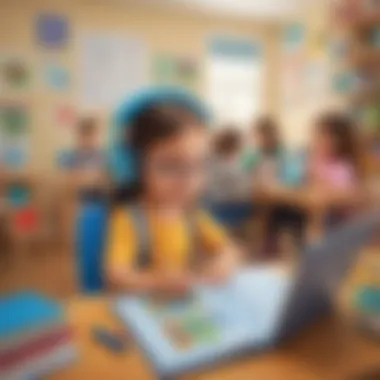
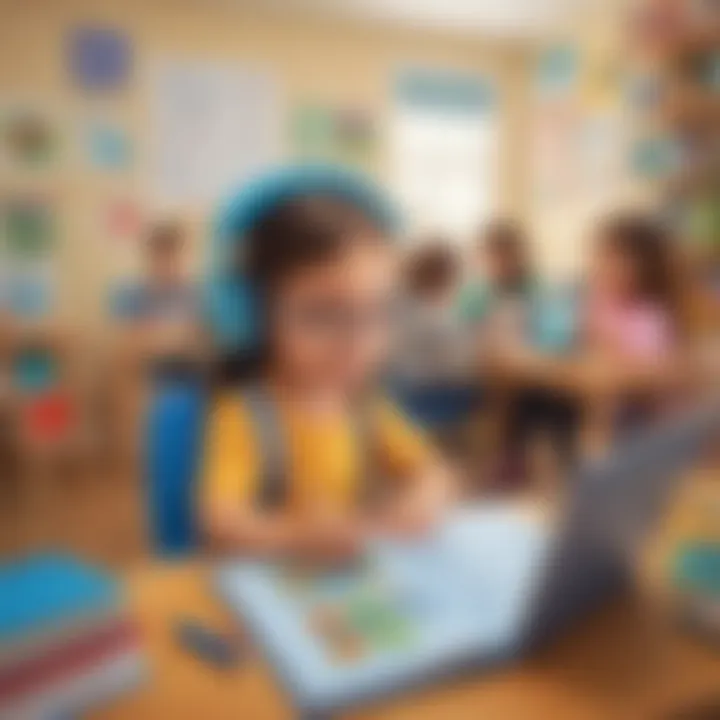
Creative Activities
In the quest to optimize virtual learning for kindergarten children, creative activities play a pivotal role. Providing young learners aged 5 to 6 years with engaging craft ideas nurtures their imagination and dexterity. Through innovative craft projects, such as paper folding and small-scale painting, kids can explore their creativity in a structured manner. These activities aim to enhance cognitive development, refine motor skills, and foster a sense of accomplishment. Detailed step-by-step guides accompanying each activity ensure that children can easily follow along, boosting their confidence and independence. Moreover, by delving into the educational value of these crafts, we can understand how they contribute to holistic learning by blending fun with skill-building.
- Craft Ideas: Delve into innovative craft projects that spark creativity.
- Step-by-Step Guides: Provide detailed instructions for easy replication.
- Educational Value: Explore the cognitive and skill development benefits.
Fun Quizzes
Another cornerstone of optimizing virtual learning for kindergartners is the incorporation of fun quizzes. Covering a range of topics, these quizzes on platforms like ElemFun aim to make learning interactive and enjoyable. By presenting diverse question types, from multiple choice to puzzles, quizzes engage children's attention and encourage critical thinking. Through knowledge reinforcement, these quizzes consolidate the lessons taught during virtual classes, ensuring that children retain essential information effectively. By making learning a playful and rewarding experience, quizzes become a valuable tool in the virtual educational toolkit.
- Quiz Topics: Explore a variety of engaging subjects covered in ElemFun quizzes.
- Question Types: Examine the different ways questions are framed to stimulate learning.
- Knowledge Reinforcement: Highlight how quizzes help solidify understanding through practice.
Fact-Based Articles
Enhancing the virtual learning experience for kindergartners involves providing quality content in the form of fact-based articles. These articles cover a wide array of topics, from science experiments to simple math concepts tailored to young learners. By presenting information in an engaging and accessible manner, children can easily grasp complex ideas and concepts. Moreover, additional resources, such as links to related articles or external websites, offer a gateway to further exploration and discovery. By curating informative and captivating content, fact-based articles enrich the online learning journey for kindergartners, empowering them with knowledge and curiosity.
- Topics: Introduce a range of engaging subjects covered in fact-based articles.
- Engaging Content: Describe how articles simplify complex ideas for young learners.
- Additional Resources: Provide links for further reading and exploration.
Introduction
Virtual learning for kindergarten holds a crucial significance in modern education. With the increasing integration of technology in learning environments, it is imperative to delve into strategies and best practices to optimize this experience for young learners. As young children navigate the digital landscape, understanding virtual learning not only enhances their educational journey but also plays a pivotal role in shaping their cognitive development and digital literacy.
Understanding Virtual Learning for Kindergarten
Defining Virtual Learning
Virtual learning refers to the method of acquiring knowledge and skills through digital platforms and online resources. In the context of kindergarten education, this approach introduces young learners to a technologically immersive learning environment. The key characteristic of virtual learning lies in its interactive nature, offering engaging and dynamic content tailored to suit the developmental needs of young children. Utilizing virtual learning in kindergarten education presents numerous advantages such as enhancing creativity, fostering curiosity, and facilitating personalized learning experiences.
Importance of Educational Technology in Early Childhood Education
Educational technology forms the cornerstone of early childhood education in the virtual realm. Its role in kindergarten education transcends traditional teaching methods by integrating innovative tools and resources to make learning more interactive and engaging. The key characteristic of educational technology lies in its ability to cater to diverse learning styles, ensuring each child has equal opportunities to learn effectively. While the advantages of educational technology in enhancing early childhood education are vast, challenges such as digital divide and screen time management need to be considered to maximize its benefits.
Challenges Faced in Virtual Kindergarten Education
Attention Span and Engagement
An inherent challenge in virtual kindergarten education is maintaining young children's attention and engagement in online learning environments. The key characteristic of addressing attention span and engagement lies in developing interactive and stimulating learning activities that captivate children's interest. While virtual learning offers flexibility and accessibility, it also demands innovative strategies to keep young learners actively involved in the educational process.


Technical Issues and Connectivity Problems
Technical issues and connectivity problems represent significant hurdles in the effective implementation of virtual kindergarten education. The key characteristic of tackling these challenges involves ensuring seamless access to online resources and platforms, guaranteeing uninterrupted learning experiences for young children. While virtual learning offers vast educational opportunities, technical glitches can disrupt the flow of lessons, emphasizing the need for robust technical support and reliable connectivity.
Significance of Optimizing Virtual Learning
Enhanced Learning Opportunities
Optimizing virtual learning in kindergarten opens doors to enhanced learning opportunities for young learners. The key characteristic of optimizing virtual learning lies in tailoring educational content to suit the individual learning pace and interests of each child. Enhanced learning opportunities empower children to explore diverse topics, engage in interactive learning experiences, and develop critical thinking skills in a digital landscape.
Development of Digital Literacy
The development of digital literacy plays a pivotal role in optimizing virtual learning for kindergarten students. The key characteristic of fostering digital literacy involves equipping young learners with the necessary skills to navigate online platforms, discern reliable information, and engage responsibly in digital spaces. While digital literacy enhances educational experiences, careful consideration of online safety and cyber awareness must be integrated into virtual learning practices to ensure a secure and enriching learning environment.
Strategies for Effective Virtual Kindergarten Learning
In this pivotal section of the article, we delve into the heart of optimizing virtual learning for kindergarten students aged 5 to 6. Strategies for Effective Virtual Kindergarten Learning play a monumental role in shaping the educational landscape for young minds. By incorporating innovative tools and tailored approaches, we aim to catalyze an enriching online learning journey for these impressionable learners. Strategies for Effective Virtual Kindergarten Learning encompass a wide array of methodologies, ranging from interactive learning tools to personalized learning experiences and parental involvement. Each facet of these strategies is meticulously designed to address the unique needs and learning styles of kindergarten students, fostering a dynamic and engaging virtual educational environment that encourages growth and development.
Interactive Learning Tools
Interactive Learning Tools serve as the cornerstone of virtual education for kindergarten students. They provide a dynamic platform for engaging young learners and enhancing their educational experience. Within this realm, Educational Apps and Games emerge as a prominent force, offering immersive and interactive learning experiences that cater to the evolving needs of young minds. Educational Apps and Games are crafted to stimulate cognitive development while making learning fun and engaging. These tools leverage gamification and interactive features to facilitate active participation and knowledge retention among young learners. Despite their benefits, careful consideration must be given to the selection of apps and games to ensure age-appropriateness and educational value. Additionally, Virtual Field Trips offer a novel way to expand the horizons of kindergarten students beyond the confines of a traditional classroom. By simulating real-world experiences and creating immersive learning environments, virtual field trips serve as potent tools for fostering curiosity and exploration among young learners.
Educational Apps and Games
Virtual Field Trips impart a sense of adventure and discovery, transporting students to diverse locales and historical landmarks without leaving their homes. By capitalizing on the power of virtual technology, these experiences open new vistas of learning and spark creativity among kindergarten students.
Personalized Learning Experiences
Another vital aspect of virtual kindergarten learning is the provision of Personalized Learning Experiences. This tailored approach aims to cater to the individual learning needs and preferences of each student, fostering a conducive learning environment that nurtures growth and development. Within this domain, Adaptive Learning Platforms stand out as beacons of personalized education. These platforms utilize algorithms and AI to adapt the learning content according to the student's pace and comprehension level, ensuring optimal engagement and understanding. By tailoring the educational material to suit each student's abilities, Adaptive Learning Platforms boost learning outcomes and instill a sense of achievement and progress.
Adaptive Learnning Platforms
We often witness how Adaptive Learning Platforms empower students to learn at their own pace, allowing them to navigate complex concepts with ease and build a strong foundation of knowledge. By providing personalized feedback and adaptive challenges, these platforms cater to the diverse learning profiles of kindergarten students, fostering a sense of ownership and mastery over their educational journey.
Individual Progress Tracking
Complementing the concept of personalized learning is Individual Progress Tracking, a practice that enables educators and parents to monitor and assess the academic development of each student. By tracking individual progress, educators can identify learning gaps, areas of improvement, and strengths, thus facilitating targeted interventions to support the holistic development of kindergarten students. Individual Progress Tracking provides valuable insights into a student's learning trajectory, allowing for customized learning plans and interventions tailored to meet their specific needs. Moreover, it promotes transparency and accountability within the educational ecosystem, fostering a collaborative approach between educators, parents, and students in nurturing academic growth and success.
Individual Progress Tracking Apsect of Kindergarten
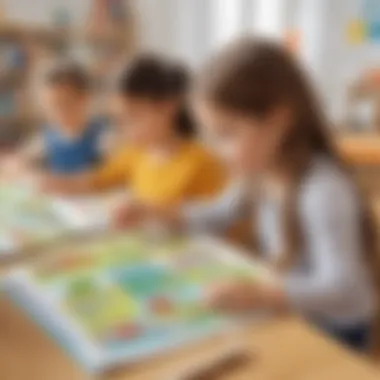
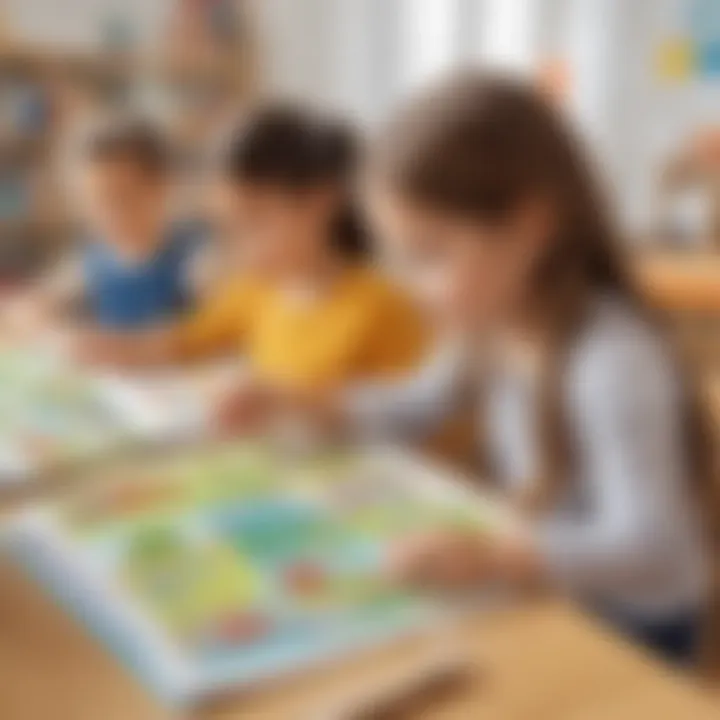
By integrating Individual Progress Tracking into virtual kindergarten education, stakeholders can gain real-time insights into a student's academic journey, enabling them to make informed decisions and provide timely support. This data-driven approach enhances the efficacy of educational interventions and reinforces the partnership between educators and parents in fostering a stimulating learning environment for kindergarten students.
Best Practices in Virtual Kindergarten Education
In this section, we delve into the intrinsic significance of implementing best practices in virtual kindergarten education. As the educational landscape evolves into the digital realm, the establishment of robust methodologies becomes paramount to ensure the effectiveness and quality of online learning experiences for young learners aged 5 to 6 years. By adhering to best practices, educators and parents can create an enriching environment that fosters holistic development and cognitive growth. Examining various elements such as routine, structure, and interactive engagement, this segment sheds light on the key components vital for optimizing virtual kindergarten education. This meticulous exploration seeks to elevate the educational journey of kindergarten students, aligning strategies with their unique developmental needs and learning styles.
Establishing Routine and Structure
Consistent Schedule
Within the realm of virtual kindergarten education, the adoption of a consistent schedule emerges as a foundational element that fuels academic progress and emotional stability. A consistent schedule outlines a predictable framework for young learners, offering a sense of security and familiarity in their daily routines. This structured approach not only aids in managing time effectively but also cultivates discipline and organizational skills from an early age. By establishing a consistent schedule, educators and parents can instill a routine rhythm that optimizes learning outcomes and supports cognitive engagement. While the advantages of a consistent schedule are evident in enhancing focus and task completion, it is essential to acknowledge potential challenges that may arise from rigid adherence to timetables. Finding a balance between structure and flexibility is key to maintaining motivation and adaptability in the dynamic landscape of virtual learning environments.
Designated Learning Space
Another crucial facet of virtual kindergarten education is the creation of a designated learning space that promotes productivity and concentration. The designated learning space serves as a dedicated area specifically allocated for educational activities, free from distractions and conducive to focused learning. This physical environment plays a pivotal role in shaping the learning experience, offering a sense of ownership and belonging to young learners. By designating a separate space for learning, children can mentally transition into study mode and associate the environment with academic engagement. The unique feature of a designated learning space lies in its ability to provide a structured setting that signals the beginning and end of learning sessions, establishing boundaries between leisure and study time. While the benefits of a designated learning space are abundant in fostering cognitive development and independence, it is essential to consider individual preferences and adapt the environment to cater to diverse learning styles.
Encouraging Social Interaction
Virtual Group Activities
A fundamental aspect of virtual kindergarten education is the encouragement of social interaction through engaging group activities. Virtual group activities facilitate collaborative learning experiences that nurture communication skills, teamwork, and peer-to-peer support among young learners. By incorporating interactive tasks that prompt group participation, educators can create a sense of camaraderie and shared learning goals within the virtual classroom. The key characteristic of virtual group activities lies in their ability to foster interpersonal connections and emotional development, promoting a sense of community and belonging among kindergarten students. While virtual group activities offer a platform for social engagement and cooperative learning, it is crucial to address potential challenges such as equitable participation and technological barriers that may impede inclusive interaction. Balancing structured group activities with independent tasks can create a harmonious blend of peer collaboration and individual growth, enhancing the overall social learning experience for young students.
Peer Collaboration
Parallel to virtual group activities, peer collaboration plays a significant role in cultivating a cooperative learning environment that stimulates critical thinking and problem-solving skills. Peer collaboration involves collaborative efforts among students to achieve shared learning objectives, encouraging knowledge exchange and mutual support. The key characteristic of peer collaboration lies in its emphasis on collective achievement, promoting a sense of responsibility and teamwork among kindergarten learners. By engaging in peer collaboration, students can enhance their communication abilities, develop empathy, and strengthen their social bonds with classmates. Despite the advantages of peer collaboration in promoting a inclusive and participatory learning culture, it is essential to address potential drawbacks such as disparities in learning pace and interpersonal conflicts that may arise in group settings. Implementing effective strategies to facilitate peer collaboration while ensuring individual growth and respect for diverse perspectives is essential in maximizing the benefits of cooperative learning experiences.
Monitoring Screen Time and Breaks
Balancing Screen Time
As the digital landscape continues to expand, the importance of balancing screen time in virtual kindergarten education becomes increasingly significant. Balancing screen time entails thoughtful management of the duration and purpose of online activities to optimize learning outcomes and mental well-being. This practice ensures that young learners engage with technology in a purposeful manner, maintaining a healthy balance between screen-based learning and offline activities. The key characteristic of balancing screen time lies in its capacity to regulate exposure to digital devices and mitigate potential risks associated with excessive screen usage. By monitoring and adjusting screen time effectively, educators and parents can cultivate responsible digital habits and prevent negative effects on physical health and cognitive development. While the benefits of balancing screen time are evident in promoting digital literacy and cognitive engagement, it is essential to acknowledge challenges such as varying levels of screen dependency and parental concerns regarding online safety. Implementing a strategic approach to balancing screen time that encompasses educational objectives, creative activities, and mindful breaks can enhance the overall learning experience of kindergarten students in virtual settings.
Incorporating Physical Movement
In tandem with screen time management, incorporating physical movement into virtual kindergarten education is a critical component that supports holistic development and well-being. Physical movement activities encompass mindful exercises, dance breaks, and gross motor skills tasks that encourage movement and active engagement during learning sessions. The key characteristic of incorporating physical movement lies in its ability to enhance focus, reduce sedentary behavior, and promote physical health among young learners. By integrating opportunities for physical activity within the virtual learning curriculum, educators can cater to the kinesthetic learning styles of students and invigorate cognitive processes through active breaks. The unique feature of incorporating physical movement is its potential to stimulate sensory experiences and improve overall learning retention by combining cognitive tasks with physical gestures. While the advantages of incorporating physical movement are evident in enhancing student well-being and academic performance, it is crucial to address challenges such as space constraints and varying levels of physical abilities among kindergarten learners. Striking a balance between screen-based activities and physical movement exercises can optimize the learning environment, supporting the holistic development of young students in virtual education settings.
Ensuring Engagement and Retention in Virtual Lessons
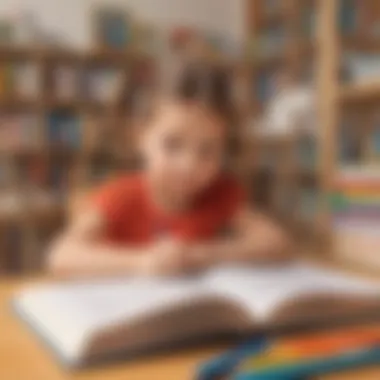

Ensuring engagement and retention in virtual lessons is a critical factor in the success of virtual kindergarten education. This section delves into the importance of engaging young learners and ensuring they retain information effectively in the digital realm. By presenting information in a compelling and interactive manner, educators can enhance the learning experience for children aged 5 to 6 years old. Attention to creating engaging content and incorporating retention strategies is paramount in optimizing virtual learning for kindergartners.
Multisensory Learning Approaches
Visual and Kinesthetic Activities:
Visual and kinesthetic activities play a vital role in stimulating young minds and promoting active learning experiences. By engaging both the visual and physical senses, children can better understand and retain information presented to them. Visual activities such as colorful illustrations and diagrams help in making abstract concepts more tangible, while kinesthetic activities like hands-on experiments enhance practical knowledge. The combination of visual and kinesthetic elements in learning materials provides a well-rounded approach to education in virtual settings.
Audio-Visual Resources:
Audio-visual resources offer a dynamic way to present content that appeals to auditory and visual learners. Integrating sound effects, music, narration, and interactive visuals can captivate young learners and reinforce key concepts effectively. Audio-visual resources add an immersive element to virtual lessons, making learning more engaging and enjoyable for kindergarten students. However, it is essential to balance the use of audio-visual components to prevent sensory overload and ensure a cohesive learning experience.
Utilizing Storytelling and Imaginative Play
Interactive Story Sessions:
Interactive story sessions blend storytelling with interactive elements to captivate young audiences and foster their imagination. Children actively participate in the narrative, making connections between the story and real-life experiences. Interactive story sessions encourage critical thinking and creativity while enhancing language skills. By immersing children in a virtual story world, educators create a memorable and engaging learning environment.
Creative Role-Playing:
Creative role-playing encourages children to embody different characters and scenarios, promoting social and emotional development. Through role-playing activities, kindergartners learn to communicate, problem-solve, and collaborate with their peers. Creative role-playing nurtures empathy and active listening skills, fostering a sense of empathy and understanding among young learners. By incorporating imaginative play into virtual lessons, educators can enhance engagement and create meaningful learning experiences.
Feedback and Assessment Strategies
Formative Assessments:
Formative assessments provide valuable insights into a child's understanding and progress throughout virtual learning sessions. By offering continuous feedback, educators can tailor instruction to meet individual learning needs and address areas requiring improvement. Formative assessments promote a growth mindset and encourage active participation in the learning process. Regular feedback sessions enhance communication between educators, parents, and students, fostering a collaborative learning environment.
Parent-Teacher Communication:
Effective parent-teacher communication is essential in supporting a child's virtual learning journey. Open and consistent communication ensures that parents are actively involved in their child's education and can provide additional support at home. By sharing progress updates, discussing challenges, and setting goals collaboratively, parents and teachers can work together to enhance the child's learning experience. Strong parent-teacher relationships foster a positive learning environment and contribute to the overall success of virtual kindergarten education.
Conclusion
Virtual learning tailored for kindergarten students represents a significant advancement in early childhood education. By leveraging digital tools and educational technology, this approach offers a plethora of benefits for young learners. Embracing virtual learning opens up new horizons for education, allowing for personalized and interactive learning experiences that cater to individual needs and learning styles. Moreover, optimizing virtual learning for kindergarteners enhances their digital literacy skills from a young age, preparing them for a technology-driven future. It is essential to recognize the importance of adapting to the evolving landscape of education, where virtual platforms provide endless possibilities for engaging and effective learning.
Embracing the Potential of Virtual Kindergarten Learning
Nurturing Young Minds Digitally
Virtual kindergarten learning fosters the holistic development of young minds through interactive educational experiences. By combining digital resources with traditional teaching methods, nurturing young minds digitally creates a dynamic learning environment that captivates young learners' interest and curiosity. The key characteristic of this approach lies in its ability to tailor educational content to suit individual learning needs, promoting a deeper understanding and retention of knowledge. Nurturing young minds digitally is a popular choice in this article due to its efficacy in cultivating critical thinking, problem-solving, and creativity among kindergarten students. One unique feature of this approach is its emphasis on child-centered learning, where educators customize lessons based on students' strengths and interests, encouraging a love for learning.
Continuous Evolution in Digital Education
Continuous evolution in digital education paves the way for ongoing enhancements and innovations in virtual kindergarten learning environments. This aspect emphasizes the importance of adapting teaching methods and curriculum to meet the changing needs of young learners in today's digital age. The key characteristic of continuous evolution in digital education is its commitment to staying abreast of emerging technologies and pedagogical practices, ensuring that virtual learning remains engaging, relevant, and effective. From virtual reality simulations to adaptive learning platforms, this approach prioritizes leveraging cutting-edge tools and strategies to create enriching educational experiences for kindergarten students. While the continuous evolution of digital education offers numerous advantages in enhancing learning outcomes and student engagement, it also poses challenges in terms of educator training and resource allocation within the virtual learning context.







